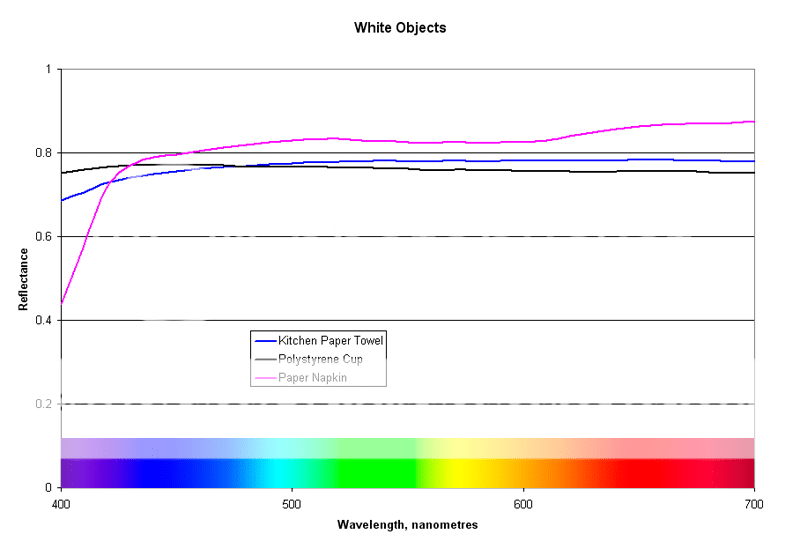Gavjenks
TPF Noob!
- Joined
- May 9, 2013
- Messages
- 2,976
- Reaction score
- 588
- Location
- Iowa City, IA
- Can others edit my Photos
- Photos OK to edit
Oh my god. Chicken wings. Want.
Go to the grocery store salad bar. Get white Styrofoam food container. It's free if you buy some chicken wings.
Joe

[.........Go to the grocery store salad bar. Get white Styrofoam food container. It's free if you buy some chicken wings.
Joe
[.........Go to the grocery store salad bar. Get white Styrofoam food container. It's free if you buy some chicken wings.
Joe
With or without BBQ sauce?
Amazon.com: DGK Color Tools DKK 5" x 7" Set of 2 White Balance and Color Calibration Charts with 12% and 18% Gray - Includes Frame Stand and User Guide: Camera & Photo
Interesting. Well does anybody sell 12% cards? Can't seem to find any. An extra half stop seems like a small issue, but one main advantage of the card is to smooth work flow, so it is non trivial to have to do something versus nothing extra.

I use the expodisc and it is amazing. I rarely have to adjust wb though I don't use it for exposure as much. I prefer my photos a little brighter than the expodisc exposes them.
Correct exposure and colour balance isn't a 'one tool' job, rather it requires a suite of tools to get the best possible result. When I'm doing work where WB/CB is absolutely critical, then I will start by dialling in a custom WB on my camera using the Expo Disc. I will base exposure off of multiple incident meter readings of the scene, and then I will shoot a Color-Checker shot for every different lighting scenario so that I can fine-tune things exactly in post. Remember too that even though your WB might be technically exact, that may not be the best look for the image, and a slight warming of skin tones or other scenes is very common.
I find that the palm of my hand is convenient, because I usually have at least one available.
Clearly, you're not drinking enough beer, then.
Interesting. Well does anybody sell 12% cards? Can't seem to find any. An extra half stop seems like a small issue, but one main advantage of the card is to smooth work flow, so it is non trivial to have to do something versus nothing extra.
One of the original grey cards, the Neutrowe from 1939, was 14% because that was found to be empirically optimum. Not all light meters are calibrated the same, so a 12% card would not be 'right' for all meters. It doesn't matter, because you need to calibrate your system, not follow some arbitrary pseudo-standard....
:thumbup:
A reference is a reference is a reference -- as long as it's consistent and you test it. The key is test and calibrate. Go to the grocery store salad bar. Get white Styrofoam food container. It's free if you buy some chicken wings.
Joe
[.........Go to the grocery store salad bar. Get white Styrofoam food container. It's free if you buy some chicken wings.
Joe
With or without BBQ sauce?
buffalo.
Kidding aside, this is what I have my students do and it's as effective in practice as any commercial product I've seen. And the bottom of egg cartons work like the dome on an incident meter if you turn them toward the camera and not the light source.
Joe
I used the Whibal card and the X-RITE ColorChecker passport.
X-Rite MSCCPP ColorChecker Passport
Now look what you all made me do. I had to go to the grocery to get a head of lettuce and there I was thinking about white balance.
So my wife wants to know why I'm taking pictures of chicken wings.
Joe
Generic household CF lamps -- custom WB set from inside lid of the container and unchanged during processing:
View attachment 50433
Whenever I used to needed to set a custom white balance I would resort to an old trick using a coffee filter. They were pretty darned close, unless it was a used one.
here's a DIY for Gavjenks to white balance with his new Fresnel lens. I did it an even easier way, I would just rubber band it over the lens hood.
How to Make a Coffee Filter 'ExpoDisc': 5 Steps (with Pictures)
Could you elaborate a bit about eggs carton part? With this and stryrofoam CWB and exposure questions would be covered.
Did you also use here ColorChecker?
Whenever I used to needed to set a custom white balance I would resort to an old trick using a coffee filter. They were pretty darned close, unless it was a used one.
here's a DIY for Gavjenks to white balance with his new Fresnel lens. I did it an even easier way, I would just rubber band it over the lens hood.
How to Make a Coffee Filter 'ExpoDisc': 5 Steps (with Pictures)
I always wondered how this DIY project fares compared to the real thing. In other words, if requirements for WB aren't too critical, does the difference even matter? I understand sometimes it's subjective, but does DIY Expodisc provide good ground for further adjustments?
